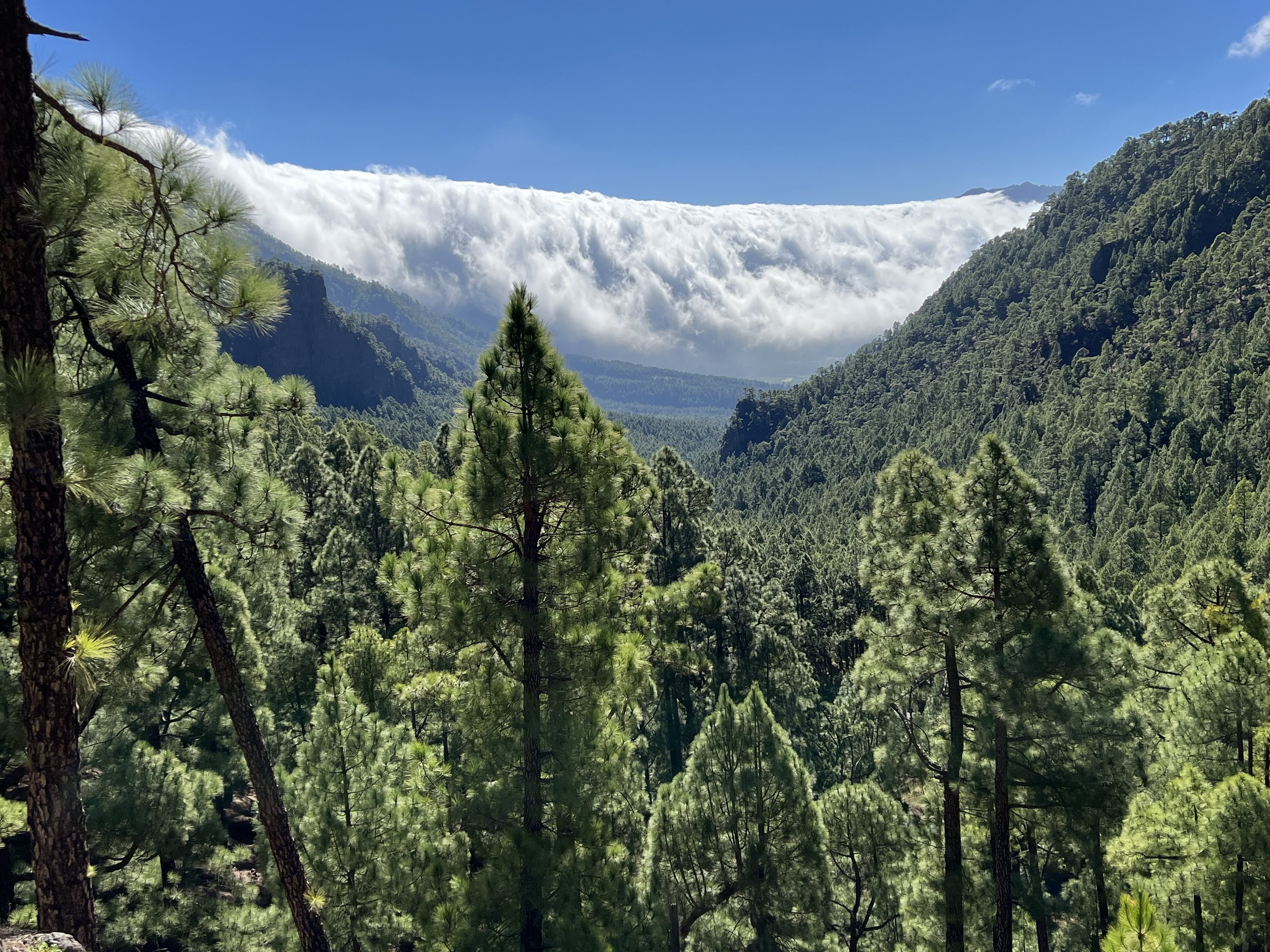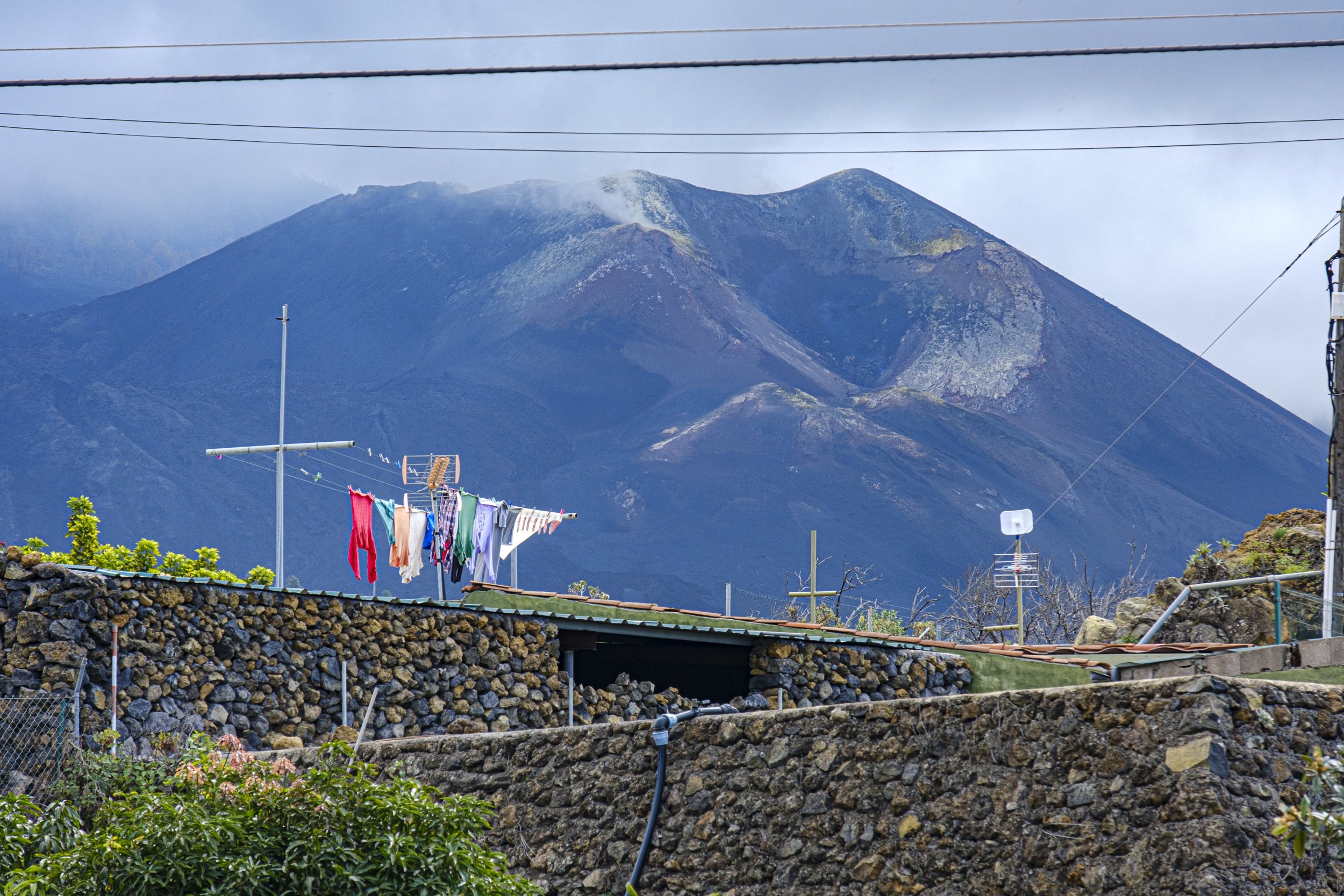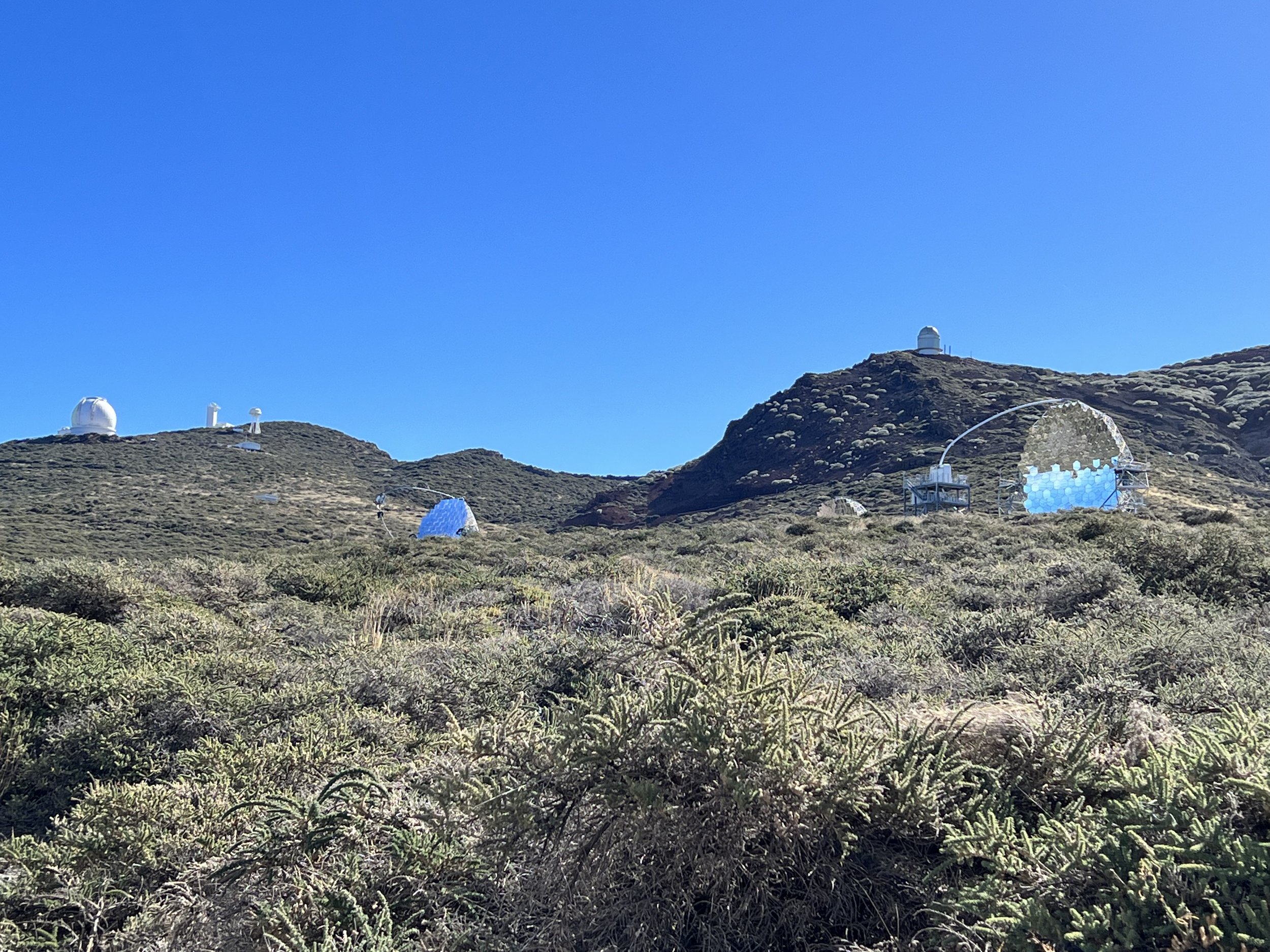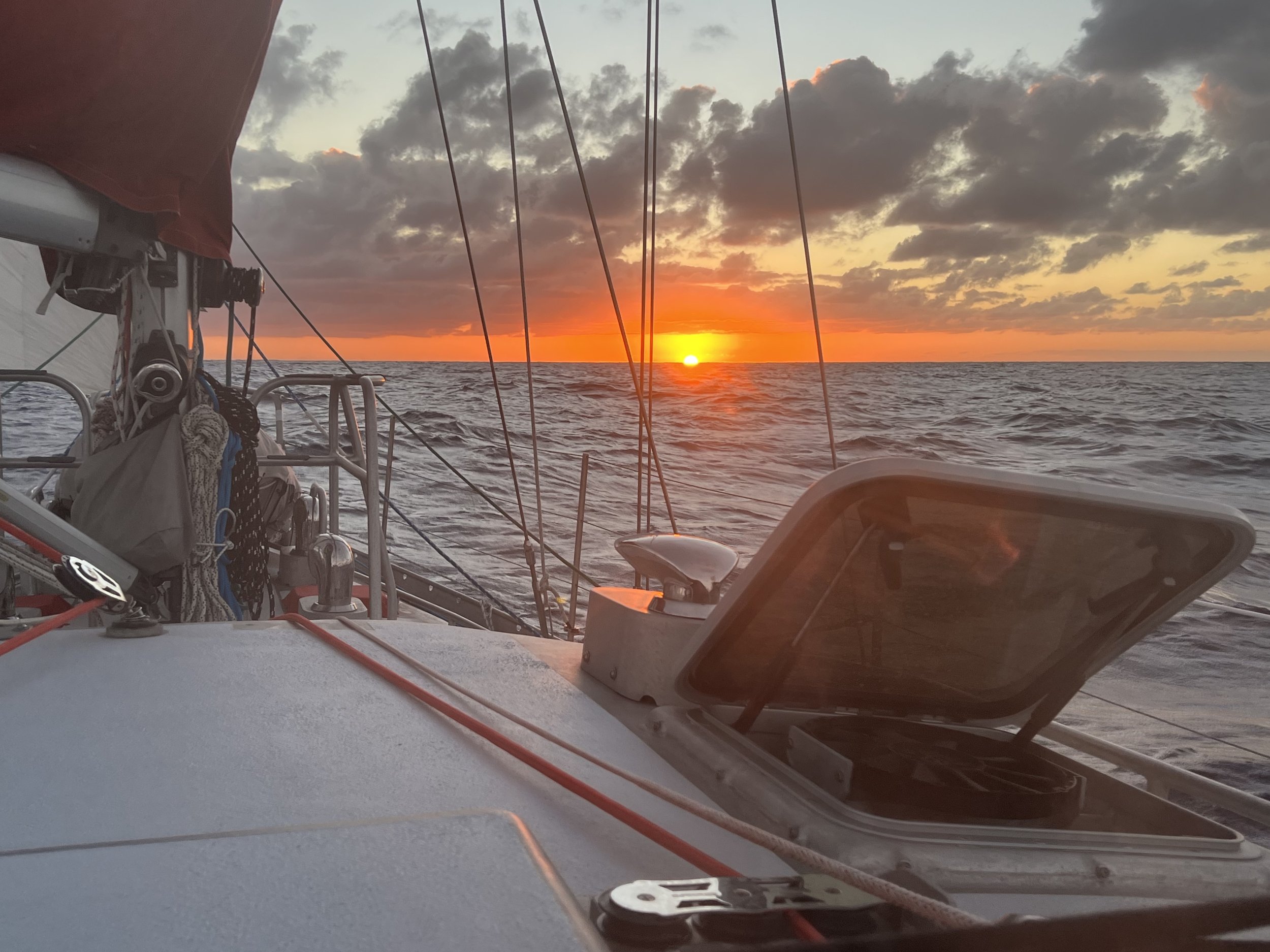Observations on La Palma
Clouds spilling into the Caldera de Taburiente.
The Canaries are an archipelago of seven volcanic islands. Due to time constraints we decided to pick just one to visit, to explore it properly and leave the others such as Tenerife, Lanzarote and Grand Canaria for another time. We picked a good one, La Palma. The westernmost island, it is the most mountainous of the Canaries, and the greenest. The crossing from Madeira took two and a half days. We called the marina office in Santa Cruz de La Palma to gain entrance through the sea gate into the marina itself. The gate was installed to try and control the huge swell that sweeps around the harbor wall and up to the marina at the head of the bay. It only partially works, as we snapped back and forth on our lines, especially when the ferry came in. However I am sure it is a big improvement on the situation before the gate was there.
Marina La Palma.
We wandered around town to check out the lay of the land. Where were the grocery stores.? How well stocked were they? Were they within walking distance of the marina? We got good results on all the above, so provisioning here for our trans-Atlantic crossing was going to be relatively straightforward. It was interesting watching the Christmas lights going up, strung between buildings and palm trees. Santa Cruz is the capital of La Palma and the old buildings and narrow streets stretched away from the coast and up the steep hillsides.
We found a trail that led up one of the steep ravines and overlooked the town. The path was a little tenuous at times, but we persevered and had a fine afternoon. The houses clinging to steep hillsides, the grassy valley on the way down, as always the varied and novel flora made the hike very interesting.
The goat farm at the end of the hike was unexpected, especially when the farmer opened the gate for them to run down the hill to the barn for feeding time.
We rented a car for a couple of days to explore the rest of the island. The first day we reserved our parking spot at La Caldera de Taburiente. There were only 10 spots available and so reservations were essential to visit the crater of the extinct volcano at the center of the island. The perfect time to visit it is the morning. As the day heats up the clouds roll in from the ocean and spill over the rim of the caldera. Presumably making good views in the afternoon a little harder to enjoy. The encroaching clouds were an amazing feature in their own right.
We parked the car and took a trail down into the crater through a beautiful pine forest with amazing views looking back up to the rim.
We went in search of lunch and then explored the west coast of the island. On September 19 2021 there was a volcanic eruption from the ridge on the west coast of the island that lasted 85 days. It destroyed over 3,000 buildings and the coastal highway, wiping out the town of Todoque and creating a new peninsula, jutting out into the ocean.
Volcano Tajogaite, still smoldering.
The highway had only recently been reopened, and its construction was still a work in progress. There were signs warning of poisonous gases and indicating stopping for a view was not an option.
Looking back across the lava field
The highest point on La Palma is Roque de los Muchachos which rises 2,422m above sea level. The air is so clean and free from both chemical and light pollution that it is a center for astronomical observations with as many as twenty observatories belonging to many different nations.
The drive up to this point was wonderful as we climbed we looked back toward Tenerife to see Pico de Teide rising high above the clouds.
Pico de Teide on Tenerife.
In reference to that last photo…. no we didn’t!
Upon reaching the summit we found the observatories scattered along the rim of the crater that we had visited the previous day. The MAGIC Telescopes observing gamma rays from galactic and extra galactic sources were really cool.
Brian walking out to the viewpoint Roque de la Muchachos.
Time was slipping away. We needed to get ready for the trans Atlantic crossing. Making sure all systems on the boat are operational and in good repair. A fully stocked fridge and freezer with supplies to last us for the passage and for months in the Caribbean. We know from our previous visit that provisions are somewhat limited in the small Caribbean nations.
Once we had everything loaded, we checked the weather and calendar. It was not the best forecast, but we had to go, we had a date in St Lucia, meeting Jake for Christmas. We checked out of Europe and headed south, hoping to pick up the trade winds near Cape Verde Islands.
Sunset, first night at sea.


































































